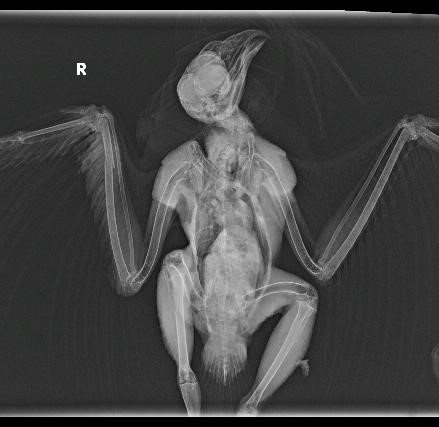The Red Tailed Hawk Rehab
- back to blogs

In early December a call came in from a concerned community member in the Burney area. A red-tailed hawk on the ground; it was rumored in the small rural town that it had been shot. Rumor was that it had been eating someone’s free roaming chickens from their yard.
If you read our latest newsletter, you may have come across the “featured Outshelter volunteer” article. Carol Forster, a longtime volunteer for Shasta Wildlife in the Burney area, was the rescuer for this injured hawk.
Having lots of raptor experience, Carol triaged the bird by cleansing a deep wound on the right wing, flushing out shot and debris. The exam revealed a possible break on the same wing but otherwise a healthy adult male red-tailed hawk.
Carol got in touch with volunteers here in the Redding area to take over the rehab for this hawk. She knew his recovery would be long and would require frequent vet visits. I was the first to answer her plea to this request. I met her at Dana Park Vet where Dr. Townsell and her staff confirmed a break, wrapped the wing and gave me specific instructions on supportive care for this amazing but poor guy.
I learned some interesting facts during my visit with Carol at the vet. “How do you know he is over five years old?” I asked. Carol explained that red-tailed hawks only get their true red tail after 5 years of age. I also inquired on how she knew he was a male. She said that males of this species are smaller than the females. His weight of 850g was a clue that this was a male and her experience of witnessing the size difference between this species genders was likely another indication.
I took the red-tail home and for almost a month he lived in a crate in my back bedroom. I would bother him once a day with a routine that both of us got use to. Pull him out of the crate, and into a box; weigh the box; clean the crate; take him out of the box and clean his wound; back into the crate with antibiotic infused mice.
He ate well until a few days before his x-ray visit with Dr. Townsell. I feared he was getting depressed in that boring crate. I expressed this to the vet and she was happy to relay that the break was healing well. “He can get out of the crate and into something bigger where he can spread his wings, but not fly” was her recommendation.
Shasta Wildlife has a hack house on Shasta Lake. That location seemed to fit the bill as it is smaller than our aviaries at the Center; the only aviary too small for him to fly. It was obvious right away that he was in much better spirits at this new location. It was a remote, quiet place for him during this 2 weeks stretch of recovery. He ate well and was moved to the Center in our largest aviary for flight time. By Thursday, our local raptor expert Kaye, came to feed. She let me know he could be released but was not eating and hadn’t eaten all week. I called Carol and asked her for advice. Carol explained another interesting thing about birds. They are all different and some are more sensitive than others about having more than one caretaker. (At the Center we have volunteers that come and feed once daily during our winter season when the Center is closed.)
Per her instruction, Jeremiah and I put him back in the hack house to fatten back up before release. Once again, he ate well every day.
The release was bittersweet. He was released as far away as fish & Wildlife regulations will allow. We can only hope he finds his mate but does not revisit the chicken smorgasbord where this whole thing started.
by Kim Baxter



